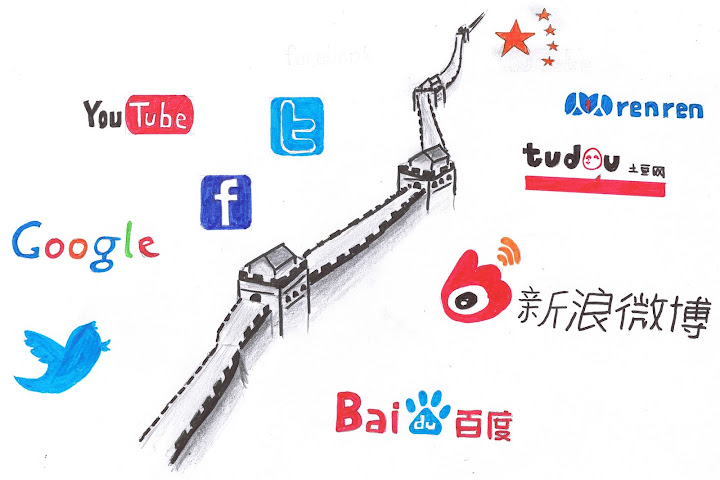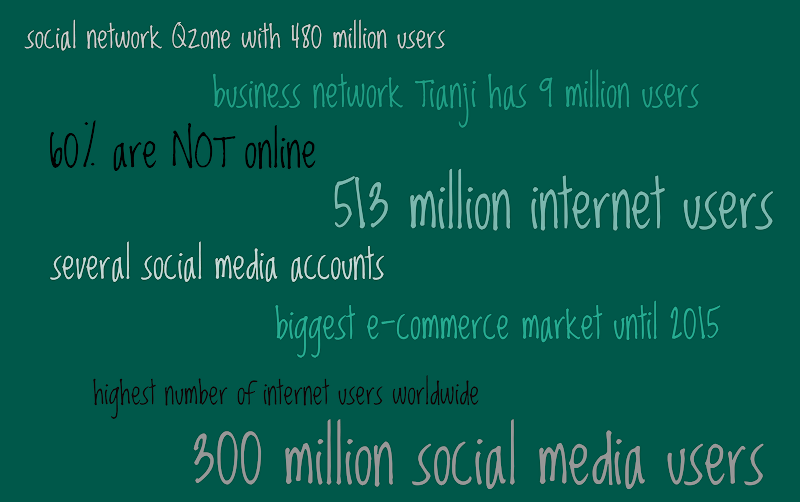lundi 12 novembre 2012
Social Media in China - a quite different thing
Par Dauphine Dauphine 2012, lundi 12 novembre 2012 à 13:32 :: Social Networks
 Communicate via social media with consumers, that is easy. But to get into the Chinese social media market means to overcome several hurdles and to understand the market's rules and consumer habits.
Communicate via social media with consumers, that is easy. But to get into the Chinese social media market means to overcome several hurdles and to understand the market's rules and consumer habits.
The Chinese way - ‘An error occurred. Please try later.’

|
How to succeed in the market
Worth knowing: 
|
Not a mission impossible, but hard workBy developing new techniques to manage the customer relationship and considering the mentioned facts, companies will make the most of the high social media activity of the Chinese. They should profit from analogies with similar markets and from the incredible potential of the market with regard to the number of internet users.
|
Facebook, 2012. Facebook Newsroom. http://newsroom.fb.com/News/457/One-Billion-People-on-Facebook
Financial Times Deutschland, 2012. Article ‘Alles außer Facebook’. http://www.ftd.de/it-medien/computer-technik/:china-alles-ausser-facebook/70020586.html
Internet World Business, 2012. Heftarchiv Ausgabe 12 2012. Article ‘Das Netz im Reich der Mitte’. http://www.internetworld.de/Heftarchiv/2012/Ausgabe-12-2012/Das-Netz-im-Reich-der-Mitte
Lingner Consulting New Media, 2012. Article ‘Social Media und Employer Branding in China’. http://lingner.com/zukunftskommunikation/china-im-social-web
McKinsey Quarterly, 2012. Marketing & Sales, Digital Marketing, April 2012. http://www.mckinseyquarterly.com/Understanding_social_media_in_China_2961
n-tv, 2012. Article ‘Cyber-Attacken in Zeiten des Parteitags: Google in China geblockt’. http://www.n-tv.de/technik/Google-in-China-geblockt-article7717896.html
t3n We Love Technology, 2012. Article ‘Social Web in China: Wie deutsche Unternehmen im Reich der Mitte erfolgreich sind’. http://t3n.de/magazin/china-sozialen-netzwerke-social-web-mitte-229593/
we are social, 2012. Blog. Post ‘Social, Digital and Mobile in China’. http://wearesocial.sg/blog/2011/12/social-digital-mobile-china/
Yahoo! Deutschland, 2012. Nachrichten. Article ‘Facebook heißt hier RenRen: Social Media in China’. http://de.nachrichten.yahoo.com/blogs/total-digital/facebook-hei%C3%9Ft-hier-renren-social-media-china-125602858.html
YouTube, 2012. Video ‘PandoHouse Rock: The Great Firewall Of China Song’. http://www.youtube.com/watch?v=89lQef9-k18
YouTube, 2012. YouTube Statistics. http://www.youtube.com/t/press_statistics?hl=en-GB

